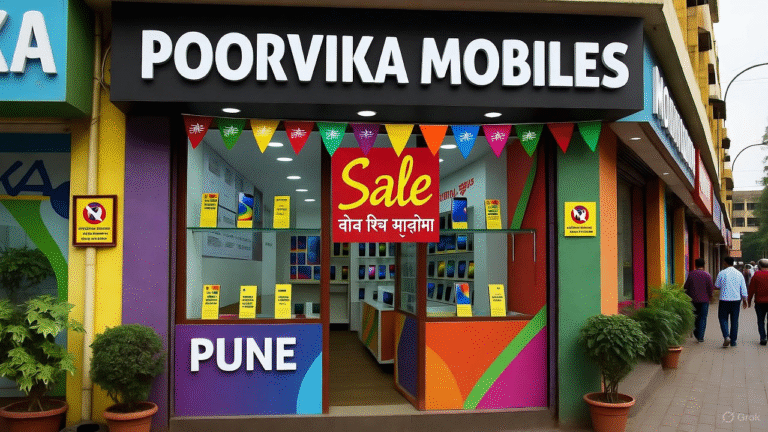
Boost Efficiency
In a market defined by tight margins and rising expectations, even small inefficiencies in the ordering process can quietly erode profitability. Every minute lost to order errors, staff shortages, or outdated systems compounds over time, eating into service speed and customer satisfaction. For many restaurants, cafés, and QSR operators, the answer lies not in hiring more staff, but in adopting smarter tools. Enter digital ordering systems: the backbone of modern service operations, transforming how businesses take, process, and fulfil orders across every channel.
What Digital Ordering Systems Actually Do.
What Digital Ordering Systems Actually Do
At their core, digital ordering systems streamline the transaction flow between customers and kitchens. They exist in several forms — mobile apps, web portals, and self-service kiosks — but their goal is consistent: to simplify how orders are placed, confirmed, and integrated into back-of-house operations.
In practical terms, these platforms consolidate multiple ordering touchpoints into one synchronised system. Whether a customer places an order via smartphone, at a table using a QR code, or through a kiosk in-store, the information flows directly into the same point-of-sale (POS) and kitchen management software.
This eliminates bottlenecks common in manual workflows. Instead of juggling paper tickets or re-entering data, staff can focus on what truly matters — speed, quality, and customer engagement. The result is not just smoother operations, but a stronger foundation for scale and consistency.
The Key Benefits: Efficiency, Accuracy, and Flexibility
The operational benefits of digital order solutions are immediate and measurable.
1. Reduced Labour Dependency
One of the most pressing issues for operators today is staffing. Labour shortages have made it difficult to maintain service levels without driving up costs. Digital order solutions alleviate that pressure by automating repetitive tasks like order entry, payment collection, and upselling. Instead of hiring extra counter staff, businesses can redeploy team members to higher-value roles — managing fulfilment, maintaining hygiene, or enhancing customer service.
2. Improved Order Accuracy
Order accuracy directly affects both cost and customer satisfaction. Manual entry errors — whether from miscommunication, poor handwriting, or multitasking — can lead to wasted inventory and lost trust. By digitising this step, orders flow directly from the customer to the kitchen, reducing human error and enabling instant confirmation. Some systems even include item visualisation, modifiers, and allergen alerts, further enhancing reliability.
3. Dynamic Menu Flexibility
Unlike printed menus, digital menus can change instantly. Whether updating prices, adding seasonal specials, or responding to supply issues, digital platforms offer real-time control. This not only saves printing costs but also empowers brands to test promotions, A/B pricing, or new items without logistical headaches.
In short, digital ordering systems allow operators to work smarter, not harder — turning operational pain points into profit opportunities.
Case Example: A Café’s 30% Efficiency Gain
Consider a mid-sized café chain that introduced digital order solutions across its five locations. Before the upgrade, the ordering process relied heavily on counter staff, with frequent bottlenecks during morning rush hours. Average service time per customer was around 4.5 minutes, and order errors averaged 3% of total sales.
After implementation, customers could order directly through a web app or at in-store kiosks. Orders went straight into the POS and kitchen screens, while digital payments removed the need for separate card terminals. Within two months, service time fell to 3 minutes per customer — a 33% improvement in throughput.
Meanwhile, order errors dropped below 1%, and average transaction value rose by 12%, largely due to automated upsell prompts (“Add a pastry for £1” or “Upgrade to oat milk for 50p”). The system also freed two staff members per shift to focus on table service and prep, further enhancing efficiency without increasing payroll costs.
These results are typical of what many QSRs and cafés experience: better speed, accuracy, and consistency — all translating directly into financial ROI.
Integration Checklist: Building a Connected System
To unlock the full potential of digital ordering systems, integration is key. A standalone app or kiosk can only go so far without a connected backend. Businesses implementing these systems should ensure the following components are properly aligned:
- POS Synchronisation: Orders should flow directly into your POS and kitchen display system, avoiding double entry or manual confirmation.
- Inventory and Menu Management: Real-time menu updates help prevent selling unavailable items and maintain pricing accuracy.
- Reporting and Analytics Tools: Dashboards tracking order volume, conversion rates, and product mix are essential for informed decision-making.
- Customer Relationship Management (CRM): Integrating loyalty programmes and customer profiles supports personalisation and retention.
- Payment Gateways: Contactless and mobile wallet integration reduce friction and speed up checkouts.
By connecting these layers, digital ordering systems can become the operational heart of your business — driving consistency, insight, and scalability.
Measuring ROI: A Framework for Success
The business case for digital order solutions is strong, but quantifying ROI requires a clear framework. Here are the key performance indicators (KPIs) operators should track post-deployment:
- Order Throughput: Measure how many customers are served per hour or day before and after implementation. A 20–30% increase is a realistic benchmark.
- Average Transaction Value (ATV): Track upsell performance; even small per-order increases compound across thousands of transactions.
- Order Accuracy Rate: Fewer errors reduce refunds and waste, directly improving profit margins.
- Labour Cost Ratio: Compare payroll costs as a percentage of revenue to gauge efficiency gains.
- Customer Satisfaction (NPS or Survey Scores): A smoother ordering experience typically improves brand perception and repeat visits.
When businesses evaluate performance against these metrics, the ROI becomes tangible. Many operators see payback within months, thanks to the dual effect of higher sales and lower operational costs.
From Efficiency to Growth
Digital ordering systems are no longer a futuristic investment — they’re a proven engine for operational excellence and revenue growth. By reducing labour dependency, improving accuracy, and enhancing the customer experience, they offer a scalable path to profitability in an increasingly competitive market.
The question for operators isn’t whether they can afford to adopt digital order solutions — it’s whether they can afford not to.
If your business still relies on manual or fragmented ordering processes, it’s time to take a closer look. Explore a digital ordering audit or request a free system demo to see how these solutions could streamline your operations, boost sales, and future-proof your business. Efficiency, insight, and growth are no longer beyond the counter — they’re built into every digital order.


